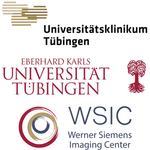Artificial Intelligence for dose reduction and denoising in Positron Emission Tomography
To date, medical imaging examinations represent almost 100% of the civilian radiation exposure. In the case of Positron Emission Tomography (PET), the exposure could be reduced by decreasing the amount of administered tracer. However, this approach results in increased levels of statistical noise in the images and can thus compromise their diagnostic accuracy.
An enormous dose-saving potential could be achieved thanks to the new disruptive technologies of Artificial Intelligence (AI), for instance, to denoise PET images. AI-based image denoising is also useful for image-based dosimetry in radionuclide therapy, where the dose is pre-established by the treatment and the emission of detectable radiation, useful for imaging, is not the goal but a by-product. This is the case of Yttrium-90 PET, which is characterized by very low counts and thus high image noise. Further research activities include the use of AI to reduce motion artifacts.

Cooperations
- Universitätsklinikum, Eberhard Karls Universität Tübingen
Publications
-
Impact of Re-framing High-Dose Scans for the Training of Neural Networks for Denoising Low-Dose PET, 1–2, 2024, DOI: 10.1109/NSS/MIC/RTSD57108.2024.10657465.
- [ BibTeX ]
-
PETAL-3D: Progressive Elimination of Noise Towards Accurate Ultra Low-Dose PET Images Using 3D U-Net, 3–3, 2024.
-
A moveable 3-D printed Phantom Setup for Evaluation of Motion induced Artefacts in a Total-Body PET/CT, 128–129, 2024, DOI: 10.1055/s-0044-1782396.
-
Dedicated 3D Printed Radioactive Phantoms With 18F-FDG for Ultra-High Resolution PET, IEEE Transactions on Radiation and Plasma Medical Sciences, 1–1, 2024, DOI: 10.1109/TRPMS.2024.3483233.
- [ BibTeX ]
-
Development and Initial Validation of Two Simulation Workflows Using GATE for a Total-Body PET/CT Scanner, 1–1, 2023, DOI: 10.1109/NSSMICRTSD49126.2023.10338368.
- [ BibTeX ]
-
Development and Validation of a Monte Carlo Simulation Workflow for a Total-Body PET Scanner, 690–691, 2023, DOI: 10.1007/s00259-023-06333-x.
-
First 3D printed radioactive 89Zr phantoms for Positron Emission Tomography, Transactions on Additive Manufacturing Meets Medicine, Vol. 5 No. S1 (2023): Trans. AMMM Supplement, 2023, DOI: 10.18416/AMMM.2023.2309833.
-
Simulation Studies and Experimental Model Validation of the Biograph Vision Quadra, Nuklearmedizin - NuclearMedicine, 62(02), V8-, 2023, DOI: 10.1055/s-0043-1766212.
-
Development and Characterization of 3D Printed Radioactive Phantoms for High Resolution PET, 1–2, 2022, DOI: 10.1109/NSS/MIC44845.2022.10399242.
- [ BibTeX ]
-
Detruncation of clinical CT scans using a discrete algebraic reconstruction technique prior, 2022, DOI: 10.1117/12.2646885.
-
3D printed radioactive phantoms for Positron Emission Tomography, ID 640, 2022, DOI: 10.18416/AMMM.2022.2209640.

- Research
- Biochemical Engineering
- Magnetic Particle Imaging
- Magnetic Resonance Imaging
- Nuclear Imaging
- Breast PET/MRI Insert Prototype
- Dedicated Prostate PET Scanner
- Particle Therapy Verification and Theranostics
- AI for dose reduction and denoising in PET
- MERMAID
- PMI - RTF VII
- SAIL - PET/CT
- Completed Projects
- Image Computing
- X-Ray Based Imaging
- SAIL
- Completed Projects
Members
 Ezzat Elmoujarkach
Ezzat Elmoujarkach

